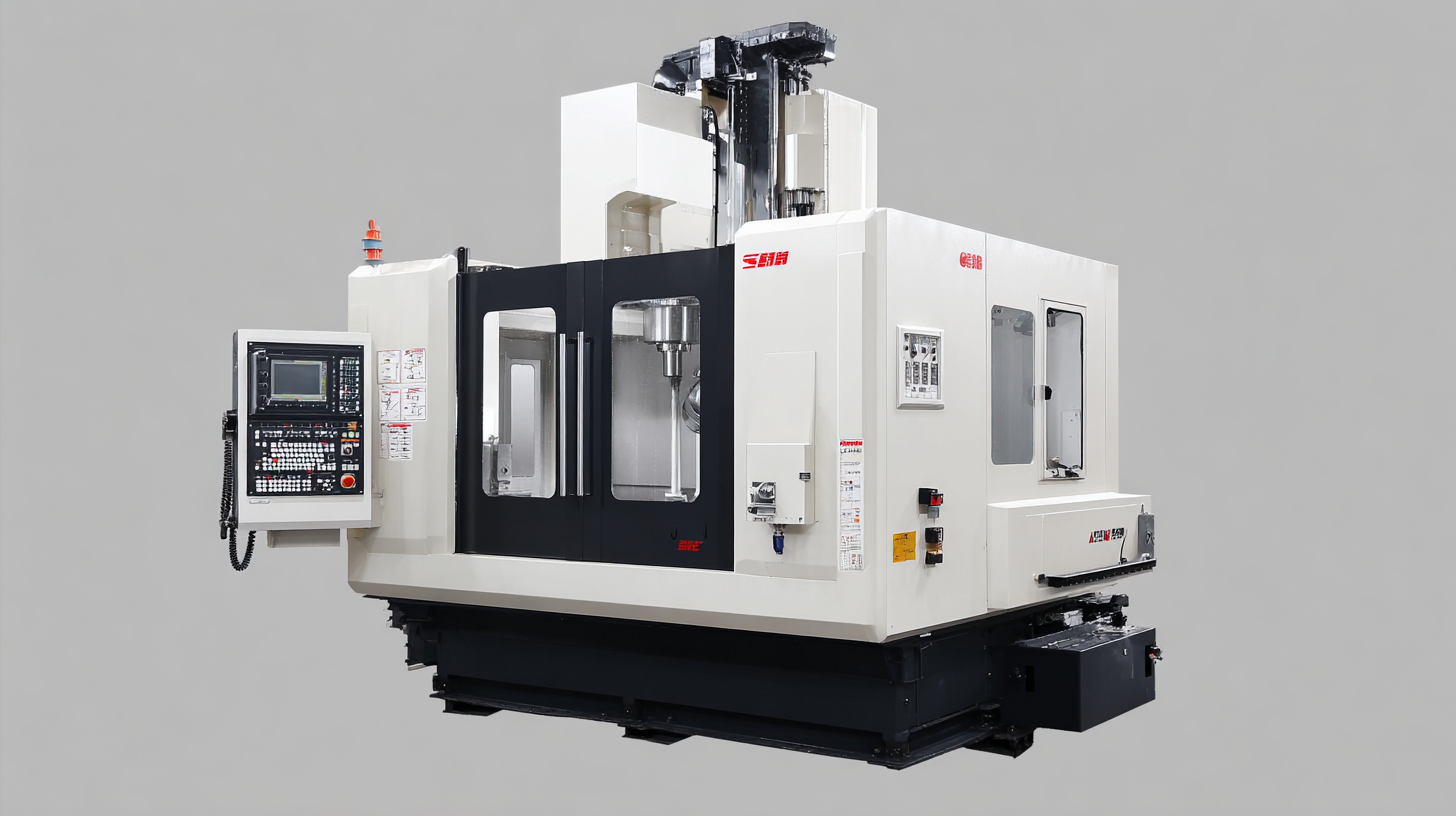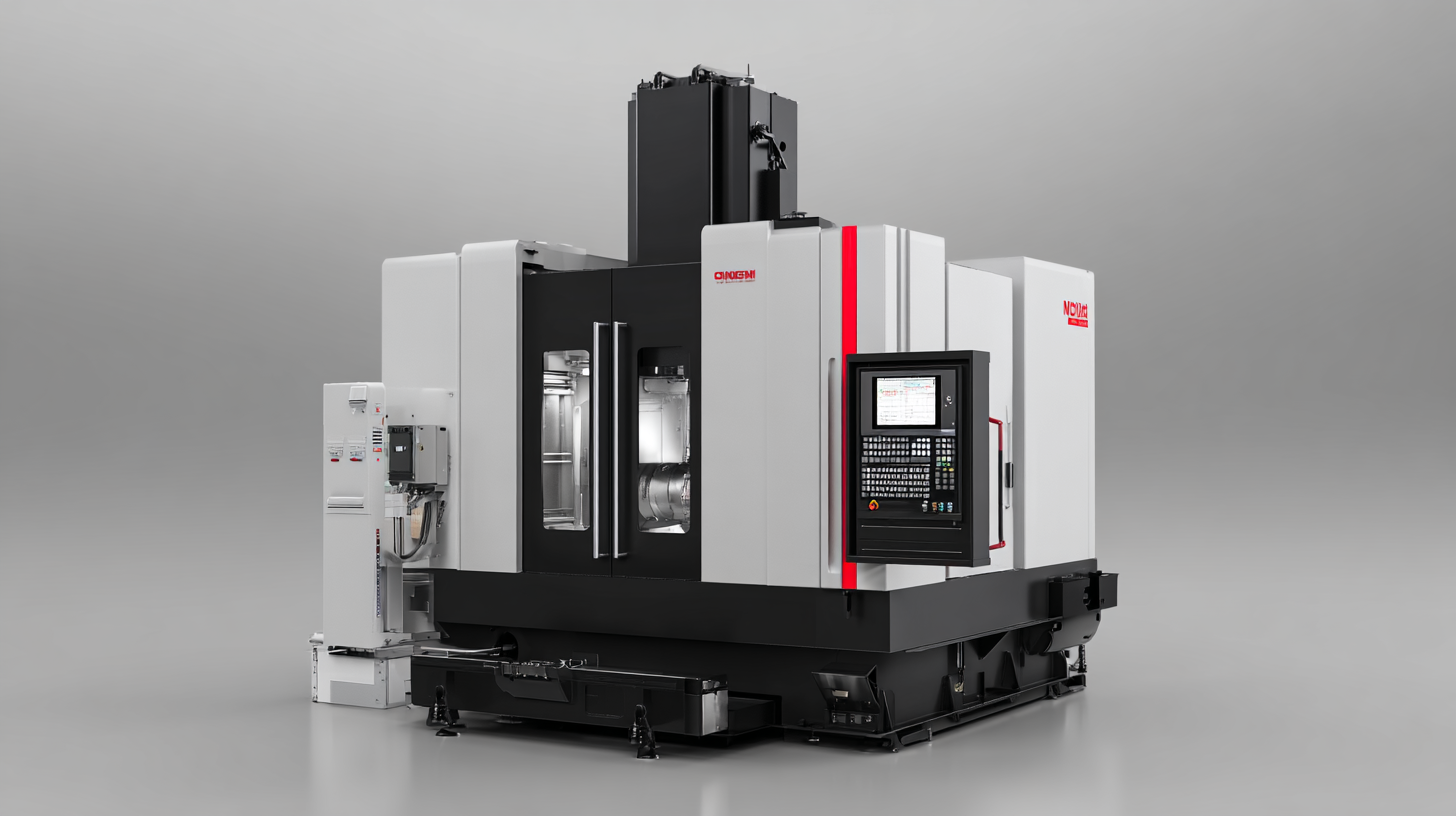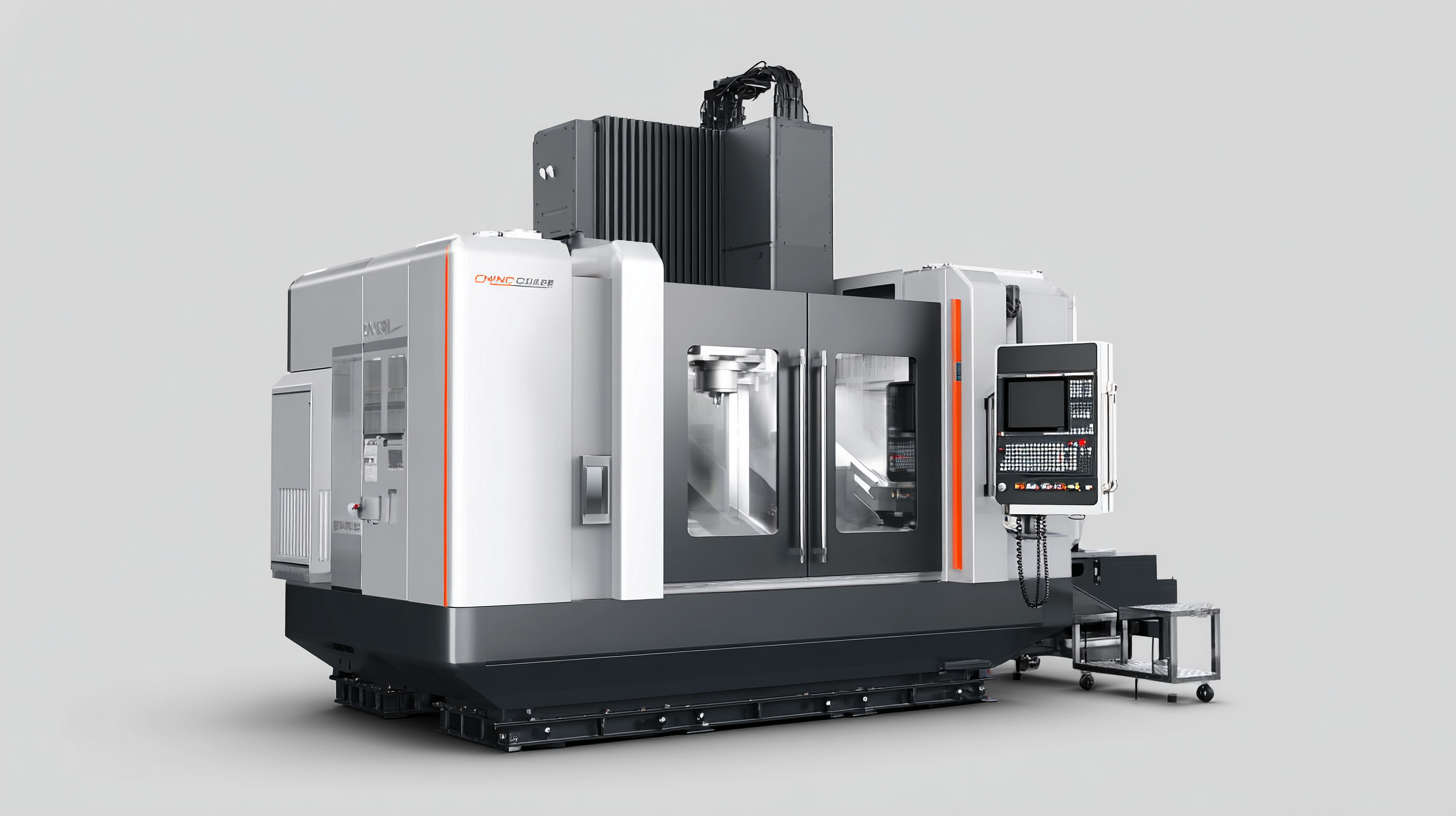China's Best CNC Vertical Machining Center for Global Buyers Trust in Quality and Innovation
In the rapidly evolving landscape of manufacturing, the significance of precision engineering cannot be overstated, particularly with respect to the CNC vertical machining center. According to the International Federation of Robotics, the global industrial robotics market is projected to reach $41.7 billion by 2025, underscoring the critical role advanced machinery plays in enhancing productivity and efficiency. CNC vertical machining centers are at the forefront of this technological advancement, delivering unparalleled accuracy and flexibility in operations.

A report by MarketsandMarkets indicates that the CNC machine market is anticipated to grow from $70.8 billion in 2020 to $100.7 billion by 2025, driven by the growing demand for precision components in industries ranging from automotive to aerospace. As global buyers increasingly trust in the quality and innovation that China offers, understanding the features and benefits of top-tier CNC vertical machining centers becomes essential for making informed purchasing decisions.
China's Leading CNC Vertical Machining Centers: A Comprehensive Overview
China has emerged as a powerhouse in the CNC vertical machining center industry, driven by its commitment to quality and innovation. According to recent market analyses, the global machining centers market was valued at USD 29.17 billion in 2018 and is projected to grow to USD 60.13 billion by 2032. This substantial growth highlights the increasing demand for advanced machining technologies worldwide, especially as manufacturers seek to enhance precision and efficiency in their operations.
Moreover, the adoption of 5-axis CNC machining centers is expected to surge, with a projected growth of USD 792.5 million from 2024 to 2028. This growth is largely driven by the implementation of self-optimized cutting technologies, which are enhanced by AI capabilities. As the machining industry continues to evolve, China's leading manufacturers are at the forefront, offering cutting-edge solutions that meet the demands of an increasingly competitive global market. Their focus on innovation and quality assurance positions them as trusted partners for global buyers looking to improve their production efficiencies.

Key Features That Set Chinese CNC Machines Apart in the Global Market
The global CNC machining market is projected to reach $100 billion by 2025, with Chinese manufacturers playing a pivotal role in driving this growth. One of the key features that set Chinese CNC vertical machining centers apart is their exceptional precision and advanced technology. According to a report by MarketsandMarkets, the industrial machinery sector in China is rapidly adopting innovative manufacturing techniques, ensuring that products meet global standards. This relentless focus on quality has positioned Chinese CNC machines as reliable options for global buyers looking for superior performance and durability.
Another distinguishing aspect of Chinese CNC machines is their cost-effectiveness. The competitive pricing, coupled with high production capacity, allows manufacturers to offer machines that deliver excellent ROI for businesses worldwide. A study by Research and Markets indicates that the average price of CNC machining centers in China is significantly lower than those in Western countries, without sacrificing quality. This affordability has made Chinese CNC vertical machining centers a preferred choice for startups and large enterprises aiming to optimize their manufacturing processes. By prioritizing both innovation and cost, China continues to strengthen its reputation in the global CNC market.
The Importance of Quality Assurance in CNC Machining Equipment
In the rapidly evolving landscape of CNC machining, quality assurance has become an indispensable element for manufacturers, particularly in response to the growing complexity of industrial applications. As the global market for metal cutting tools is projected to expand from $86.24 billion in 2025 to $141.65 billion by 2032, indicating a robust compound annual growth rate of 7.3%, manufacturers must prioritize the reliability and stability of their equipment. This emphasis on quality not only enhances operational efficiency but also fosters trust among global buyers who are increasingly selective about their machinery sources.
One vivid example can be found in the energy sector, where large turbine blades are manufactured with intricate geometries that require precise quality control. Advanced equipment, such as three-dimensional optical scanning systems, ensures that these components meet stringent specifications. These quality management processes are not just about compliance; they are vital to preventing costly failures and maintaining competitive advantage in a high-stakes market.
**Tips:** Always assess the quality assurance processes of your machinery suppliers. Invest in technologies that enhance measurement precision and consistency in production. Consider collaborative partnerships with industry leaders to stay ahead of quality standards and innovations.
China's Best CNC Vertical Machining Center for Global Buyers Trust in Quality and Innovation - The Importance of Quality Assurance in CNC Machining Equipment
| Dimension | Specification | Importance |
|---|---|---|
| Accuracy | ±0.005 mm | Ensures precision in machining components |
| Repeatability | ±0.002 mm | Maintains consistent quality in mass production |
| Spindle Speed | 20,000 RPM | Improves efficiency and surface finish quality |
| Table Size | 400 x 800 mm | Supports larger workpieces for diverse applications |
| Tool Capacity | 24 Tools | Facilitates versatility in production processes |
| Control System | Fanuc | Reliable and user-friendly for operators |
| Weight | 2000 kg | Stability during operations to enhance safety |
Innovative Technologies Driving CNC Machining Centers in China
The CNC machining industry in China is experiencing a remarkable transformation driven by innovative technologies that enhance productivity and efficiency. With the rise of digital manufacturing techniques, Chinese manufacturers are leveraging tools like artificial intelligence, the Internet of Things (IoT), and advanced robotics to optimize their operations. This technological evolution not only streamlines production processes but also improves the quality of the final products, making them more competitive in the global market.

To maximize the benefits of CNC machining technologies, companies are encouraged to invest in training their workforce. By equipping employees with the skills necessary to operate and maintain these advanced machines, manufacturers can ensure that they are fully utilizing the capabilities of the technology at their disposal. Additionally, adopting a data-driven approach can help identify areas for improvement and drive continuous innovation.
Emphasizing research and development is crucial in staying ahead of market trends. Companies should allocate resources to explore new materials and machining methods, thereby enhancing their product offerings. Collaboration with tech firms can also accelerate the integration of cutting-edge solutions that push the boundaries of what's possible in CNC machining.
Alternative CNC Solutions: Comparing China's Offerings with Global Competitors
As the global demand for precision engineering continues to escalate, the offerings of CNC vertical machining centers from China have gained significant attention from manufacturers worldwide. China's CNC solutions are often distinguished by their competitive pricing and rapid production capabilities. Many buyers are attracted to the innovative features embedded in these machines, such as advanced automation and real-time monitoring systems, which enhance overall efficiency on the shop floor. This combination of technology and cost-effectiveness positions Chinese CNC centers as viable alternatives in a marketplace predominantly influenced by established brands from Japan, Germany, and the United States.
When comparing China's CNC vertical machining centers to those from traditional powerhouses, it's essential to consider aspects like technical support and customization options. While global competitors may provide unparalleled engineering expertise and longer service histories, Chinese manufacturers are increasingly closing the gap by investing in R&D and establishing global partnerships. This shift not only boosts their reputation but also helps create tailored solutions that meet diverse customer needs. Thus, for global buyers, the decision now lies in balancing innovation, price, and service—the trifecta that can define a successful machining operation.
